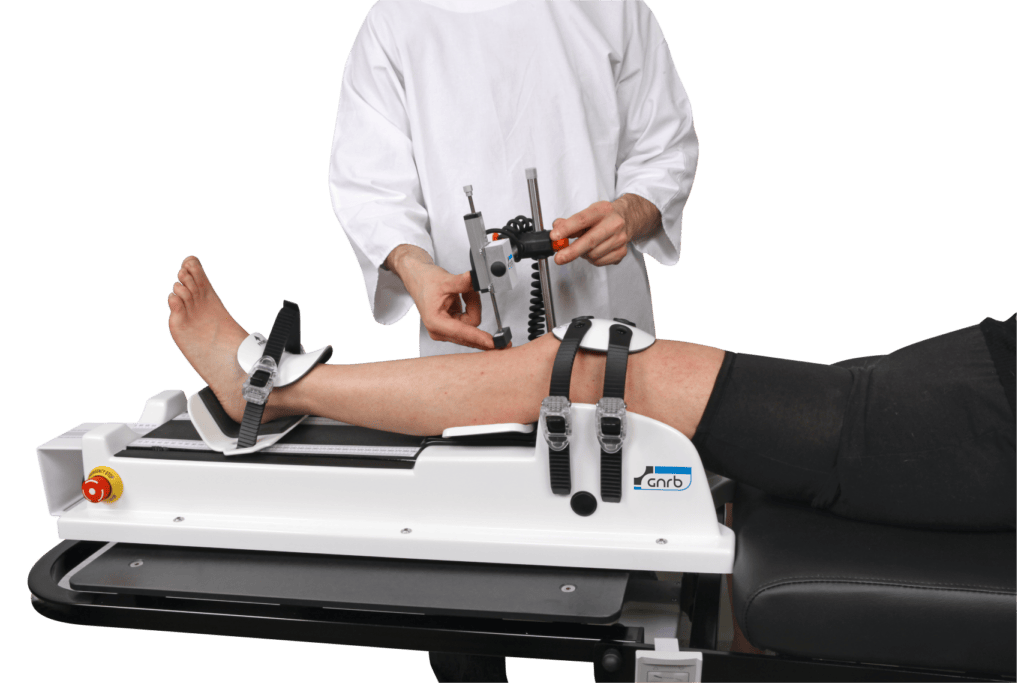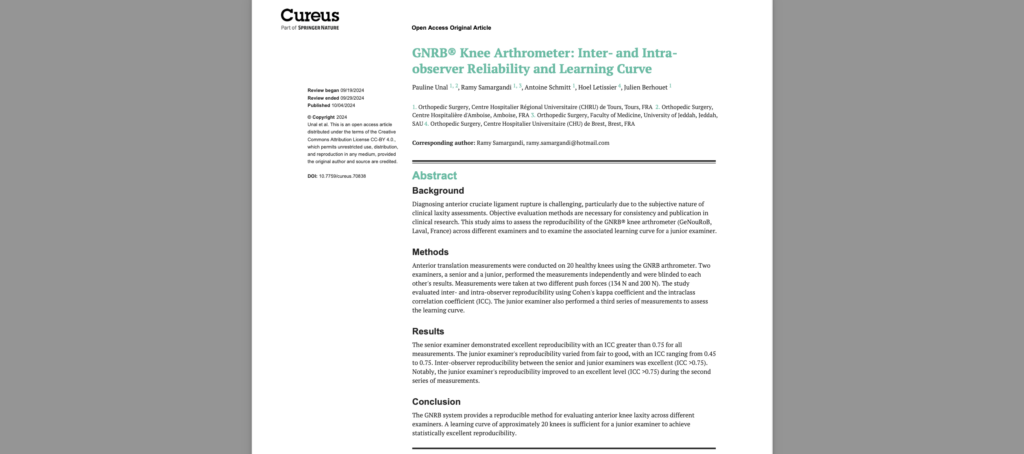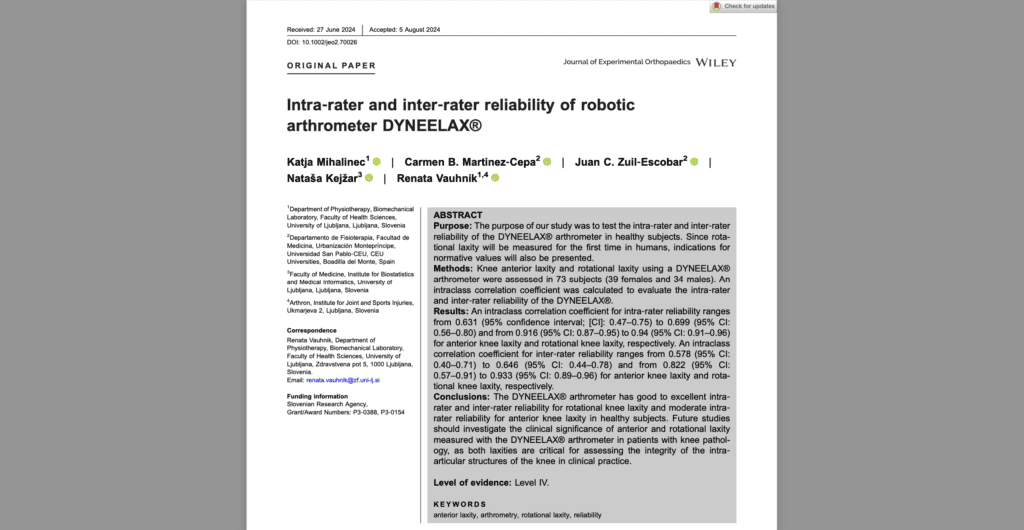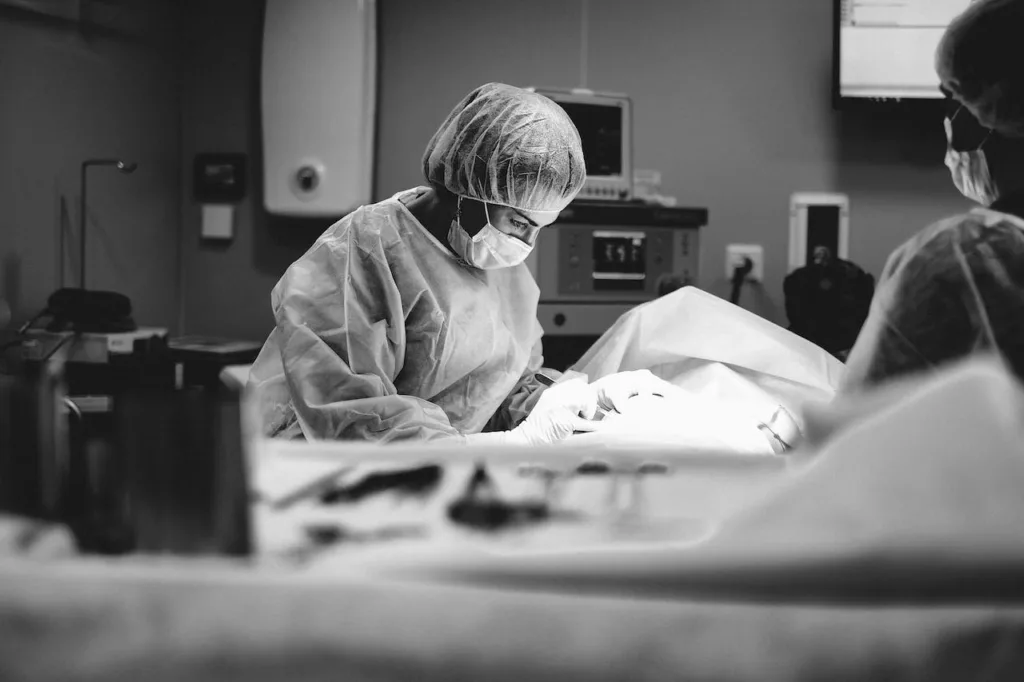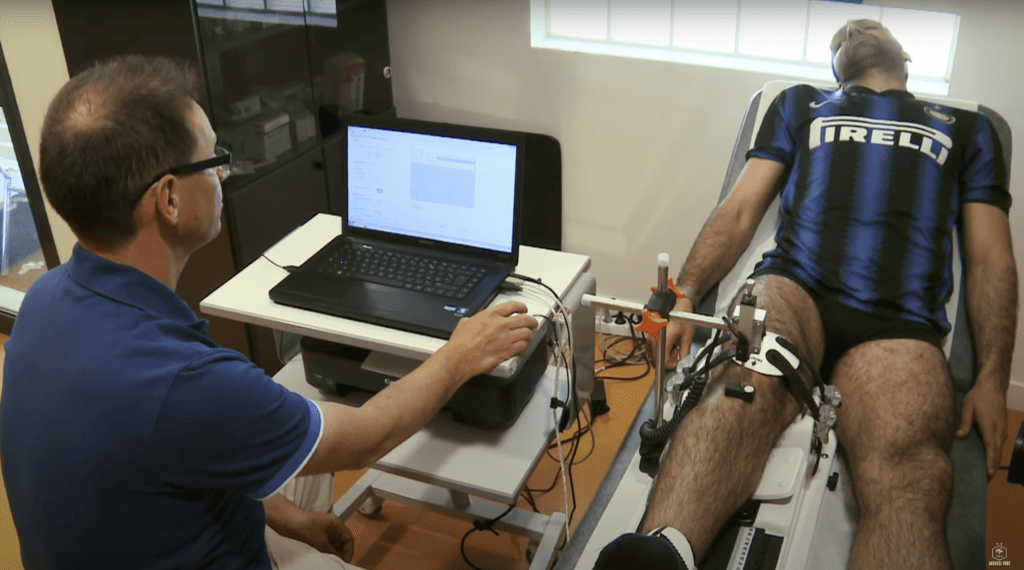Breaking Barriers in ACL Treatment: Why Robotics Dominate ACL Testing
Enhancing ACL Treatment from Injury to Recovery with Robotic Arthrometers Anterior Cruciate Ligament (ACL) injuries pose a significant challenge for both patients and healthcare providers. Traditional diagnostic and rehabilitation tools have offered limited insights into the complex biomechanical properties of the knee, often resulting in suboptimal outcomes. However, recent advancements with robotic arthrometers, particularly the DYNEELAX® and GNRB® systems, […]
Breaking Barriers in ACL Treatment: Why Robotics Dominate ACL Testing Read More »

